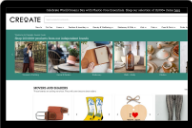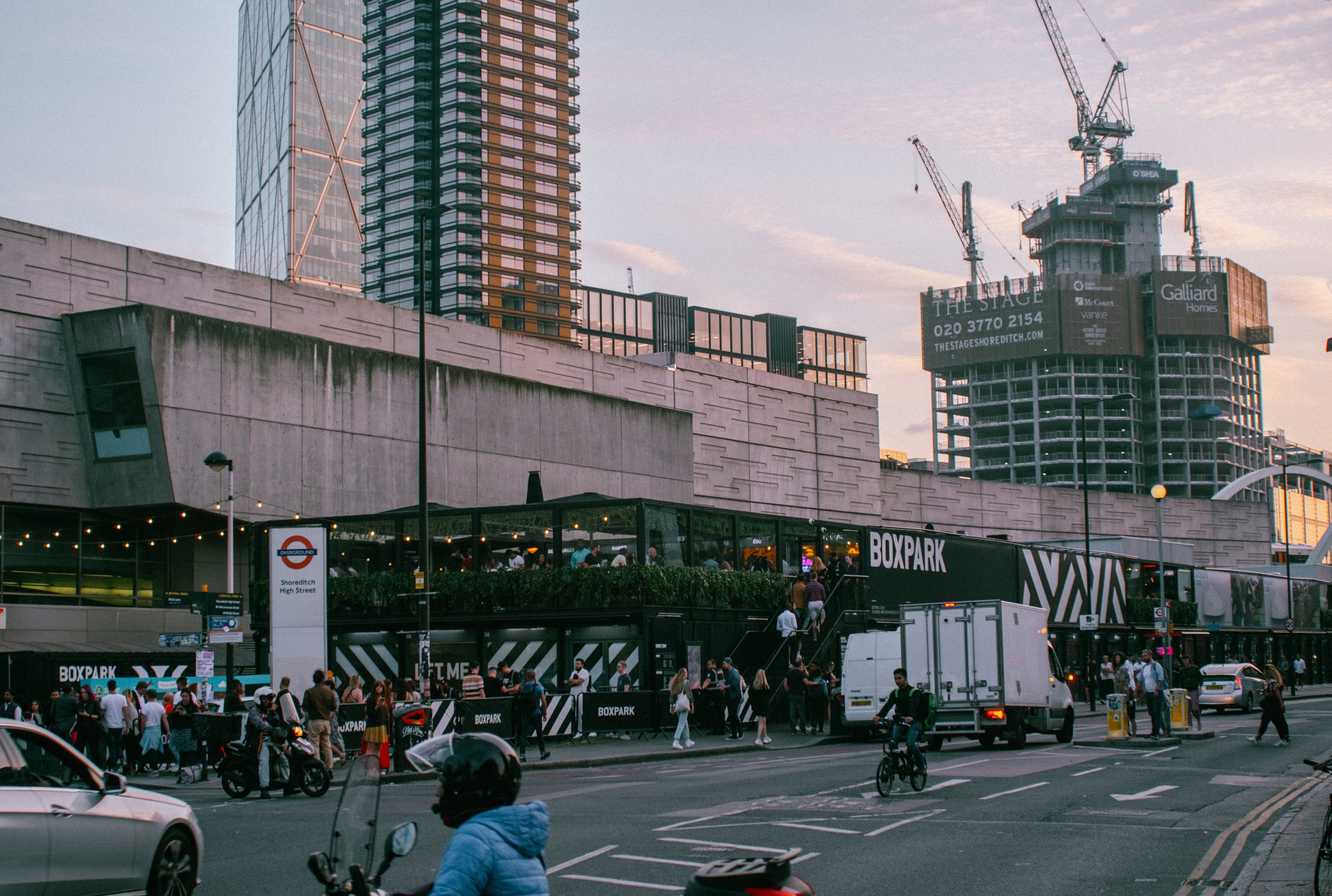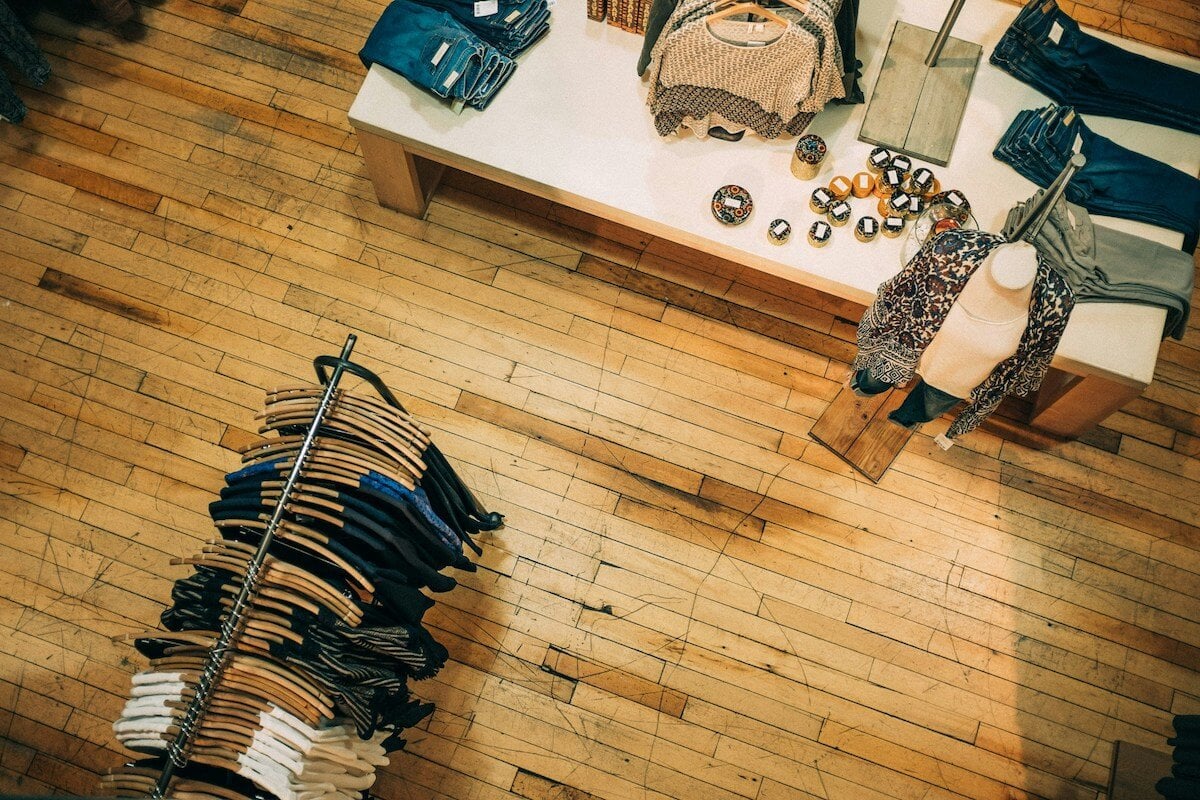
📍Lift store, Southwold, UK
What is visual merchandising? Well, if you’ve ever…
- Walked into a shop because something in the window caught your eye
- Chosen a jumper because you liked the outfit displayed a mannequin
- Been gently funnelled through an IKEA, and come out with more than you planned to buy
- Grabbed a more expensive bottle of water when you were buying one in a rush
- Picked up something you hadn’t planned to from the aisle end cap (the display at the end of an aisle)
…then you’ve felt the effects of visual merchandising.
And there are hundreds of other subconscious shopping choices we could have added to this list. It’s powerful and important stuff!
Visual merchandising refers to the way products are physically displayed to make them more appealing to purchase, and covers everything from a physical shopfront, to window displays, the floorplan or shop layout, and where on the shelves a product is placed.
The core elements of visual merchandising
Visual merchandising covers everything to do with:
- The outside of your shop (shop window, signage, and storefront decoration)
- The layout of your shop
- How the inside of your store is decorated
- How and where your products are displayed
Broader merchandising takes other factors into account, including what you’re actually selling, and how it’s priced. It’s broken out into four pillars (‘the 4 Ps of Merchandising’):
- Product
- Placement
- Pricing
- Promotion
But ‘visual merchandising’ focuses purely on how things are looking, where they’re most visible, and how to optimise both to increase sales of the right things.
Does visual merchandising still matter today?
“Physical retail is dead!”.
Variations of this phrase are easy to throw around. They may make good headlines, but they’re a pretty lazy and dramatic take on how retail has evolved so far, and continues to do so.
From where we’re sitting, visual merchandising is more important now than it's ever been.
Let’s take things back 50 years, and imagine you want to buy a book in the 1970s:
(There’s no need to go back quite that far, but we thought it seemed like a pretty fun era to transport ourselves to).
You head to the bookshop in town, hoping they have a copy left. All your friends are reading this book, and you’re feeling left out.
You scour the tables and shelves with no luck, before asking a rather curt shop assistant, who informs you that the book is sold out. You head out of the shop and assess your options, but frankly, there aren’t really any. So you wait a week, and return to buy the book, which by that point is back in stock.
Now let’s head back to the present day.
It’s 2024, the day after payday. You’re walking along a street in a part of town you don’t normally go to, when your eye is caught by the bold shopfront of a bookshop you hadn’t previously noticed.
In the window you spot a copy of a book that your favourite Bookstagram account recommended last week. You have it waiting in your Amazon cart, but haven’t checked out yet.
You have a little time to spare, so you pop inside. They sell coffee and you order one, browsing the sunlit shelves at a leisurely pace. When you go to buy the book you saw in the window, you bond with the assistant over your shared love of that author. She recommends another book she thinks you’ll love based on your taste.
You leave with two books and a coffee in hand. And even though you could have bought the books (and probably the coffee) cheaper elsewhere, it doesn’t matter: you’ve had a nice time, and you’re happy.
Our point being: when it’s easier than ever for people not to go to a shop, you have to work harder to make it an appealing option. And visual merchandising plays a really important role in that.
Visual merchandising is a huge part of crafting a “retail experience”
We talk a lot about how customers expect an “experience” from modern day retail, and I think that word can feel daunting to some — like you need to be providing a personal shopper, champagne on arrival, or some kind of AI technology to keep customers coming through the doors.
Really, it just comes down to making the act of shopping in itself a joy.
Engaged and knowledgeable staff, a bright and well-laid-out store, and a comfortable, unhurried buying experience where people can easily find what they need (and what they didn't know they needed)? That’s all part of it.
And a beautiful shopfront and window display help draw people in to experience it.
At its core, that’s visual merchandising done well; there’s no need to overcomplicate it.
It also helps market your shop on autopilot
The wider marketing benefits of great visual merchandising are plentiful.
Put simply, pretty stores = grid-worthy stores! Just sneak a peek at BookBar’s tagged posts for the proof:

📍 BookBar, London, UK
Once your customers start posting about you organically, the effect will snowball, getting you in front of a much wider audience with minimal extra effort on your side.
📚 Bookmark for later: How Our Favourite Bookshops Are Diversifying (& What We Can Learn From Them)
Pick up your visual merchandising prescription
So now you know what visual merchandising is, why it’s important, and what it includes. But you might still be wondering: how do I get started?
We have a number of great guides on this that dig into visual merchandising tips, techniques, and strategies.
We’ll link each of them below. But in terms of where to start, if you already have a shop here’s where we’d focus our attention depending on the scenario that resonates most with you:
1. You’re struggling to get people through the door:
- Switch up your shop window, and update it regularly
- Redecorate your storefront! Go for something bright and bold

📍 Luna & Curious, London, UK
📚 Bookmark for later:
15 Creative Shopfront Design Ideas to Try
21 Shop Window Display Ideas & Tips
How to Increase Footfall In-Store: 15 Strategies
2. People come into your store, but don’t spend long in it:
- Make sure there’s a sizeable ‘decompression zone’ (empty space) when you first enter your shop so people don’t feel cramped
- Expand the aisle width for the same reason
- Choose a store layout that helps guide people naturally through your shop, so they're less likely to enter and leave immediately
- Put tactile items, like stationery and soft knitwear, on tables instead of shelves, encouraging people to linger over them for longer
📚 Bookmark for later: 13 Retail Store Layouts & Customer Flow Tips
3. People are always asking where to find things:
- Invest in more signage to help people find key products or areas, such as fitting rooms
- People prefer to scan horizontally to find the type of item they’re looking for, and then scan vertically to find the specific item they want, so arrange yours accordingly
- Beyond this, try to organise items by logical ‘themes’; if you’re a homeware and lifestyle shop, for example, it might make sense to group by ‘room’, with bathroom, bedroom, and kitchenware all in their own distinct areas

📍Domestic Science, Nailsworth, UK
📚 Bookmark for later: 20 Visual Merchandising Tips & Best Practices for 2024
4. People are buying plenty, but not the items you want them to:
- Place your higher value or higher margin items in the most visible spots in your store; the shop window, beside the till, to the right when you first enter the store, and at eye level (eye level = buy level!)
- Put your sale and lower value items towards the back of your store
FAQs
What’s the best way to learn visual merchandising?
Whether you’re looking to start a career in visual merchandising, or you’re just looking for inspiration for your own store, we’d recommend supplementing online research with plenty of real-world experience. Pay attention to what other stores are doing, and how this affects your experience as a buyer. When you find examples you like, snap a photo to save the idea for later.
What’s the difference between retail merchandising and visual merchandising?
While visual merchandising focuses on how a store looks, and making sure the right products get the most visibility, retail merchandising digs into different areas of the retail experience, including which products are available and how they’re priced, plus additional marketing tactics.








